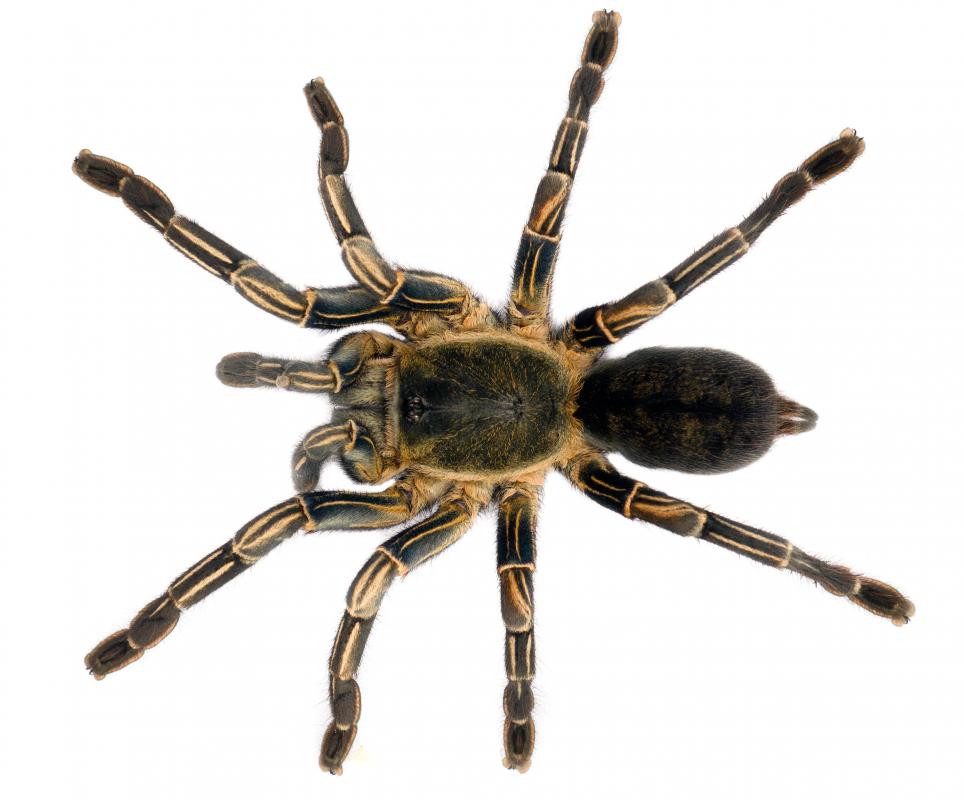At AllThingsNature, we're committed to delivering accurate, trustworthy information. Our expert-authored content is rigorously fact-checked and sourced from credible authorities. Discover how we uphold the highest standards in providing you with reliable knowledge.
What Is a Carapace?
In animal anatomy, the carapace is the dorsal section of an exoskeleton or shell. Carapaces occur in a number of different types of animals, including many species of arthropod. The only vertebrate animals to have them are turtles and tortoises.
In biology, species are classified by the characteristics they share and organized into hierarchical groups — referred to as phylums, subphylums, and classes — that help define the broader "families" within the animal kingdom. The largest group of animals to have carapaces are the arthropods. This phylum consists of segmented animals with exoskeletons, which are essentially external skeletons. Among arthropods, two groups contain species with carapaces: crustaceans and arachnids.

The subphylum of crustaceans contains tens of thousands of species, including crabs, lobsters, shrimp and diminutive animals called phytoplankton. In these species, the carapace is a hard segment of the exoskeleton which protects the dorsal, or upper, part of the cephalothorax, the segment which makes up the upper body and contains the eyes and mouth. In some cases, the carapace projects beyond the cephalothorax in a thin spike called a rostrum, from a Latin word meaning "ram." In many crustaceans, the exoskeleton is biomineralized, meaning that it consists largely of mineral, usually calcium carbonate. This composition makes the carapace extremely strong and rigid, protecting the vulnerable body of the crustacean.

In the arachnid class, the exoskeleton is not usually biomineralized to the same extent as it is in crustaceans. In arachnids, the term carapace still refers to the dorsal part of the exoskeleton which protects the cephalothorax. This portion of the exoskeleton houses the eyes and other organs. In some species, it is subdivided. Some biologists refer to the carapaces of arachnids as "prosomal dorsal shields" in order to avoid confusion with carapaces in other species.
In addition to crustaceans and arachnids, some vertebrates, namely turtles and tortoises, have carapaces. In these animals, the spine and ribs fuse to plates of bone to form a hard shell. The dorsal section of this shell is called the carapace, while the ventral section is called the plastron. The outer surface of the shell is protected by plates called scutes, from a Latin word meaning "shield." Some species of turtle lack scutes; these species are often called "soft-shelled," even though the bony carapace still exists under the skin.
The term "carapace" is often used in modern English to refer to any hard shell. This usage is inaccurate in two ways. First, the term properly only refers to certain types of shells. The dorsal surface of a lobster, for instance, has several hard plates, but only one of them is the carapace. Additionally, in some species, as in many spiders, the carapace is not as hard as it is in turtles or crustaceans, because it is simply the section of the exoskeleton covering the dorsal cephalothorax.
Frequently Asked Questions
What exactly is a carapace?
A carapace is the hard, protective upper shell of a turtle, tortoise, armadillo, crustaceans like crabs and lobsters, and some arachnids. It's part of the exoskeleton and serves to shield these animals from predators and environmental hazards. In turtles and tortoises, the carapace is made up of bony plates covered by scutes, which are keratinous scales.
How does a carapace differ from a shell?
The term "carapace" often refers specifically to the dorsal (upper) section of the shell in turtles and tortoises, whereas "shell" encompasses the entire protective bony structure, including the ventral (lower) part called the plastron. In crustaceans, the carapace typically covers the cephalothorax, which is the fused head and thorax.
Do all turtles and tortoises have a carapace?
Yes, all turtles and tortoises have a carapace. It is an integral part of their anatomy that provides structural support and protection. The carapace is connected to the ribs and spine, making it an essential component of the turtle's or tortoise's skeletal system.
Can a carapace heal if it's damaged?
A carapace can heal from minor damages, as it's a living structure with blood vessels and nerves. However, the healing process is slow and may leave scars. Severe damage can be life-threatening and require veterinary intervention. According to wildlife rehabilitation sources, it's crucial to protect turtles and tortoises from harm as their carapaces are vital for their survival.
Do animals with carapaces feel through it?
Yes, animals with carapaces can sense through them due to the presence of nerve endings. While the carapace is a tough barrier, it's not devoid of sensation. Turtles, for example, can feel pressure and pain through their shells, indicating that the carapace is more than just armor; it's a sensory interface as well.
How do carapaces develop in these animals?
Carapaces develop through a process of ossification where the ribs and vertebrae in turtles and tortoises expand and fuse together, forming a solid shell. In crustaceans, the carapace forms as part of their exoskeleton, which they periodically shed and regrow in a larger size through a process called molting to accommodate their growing bodies.
AS FEATURED ON:
AS FEATURED ON:












Discuss this Article
Post your comments